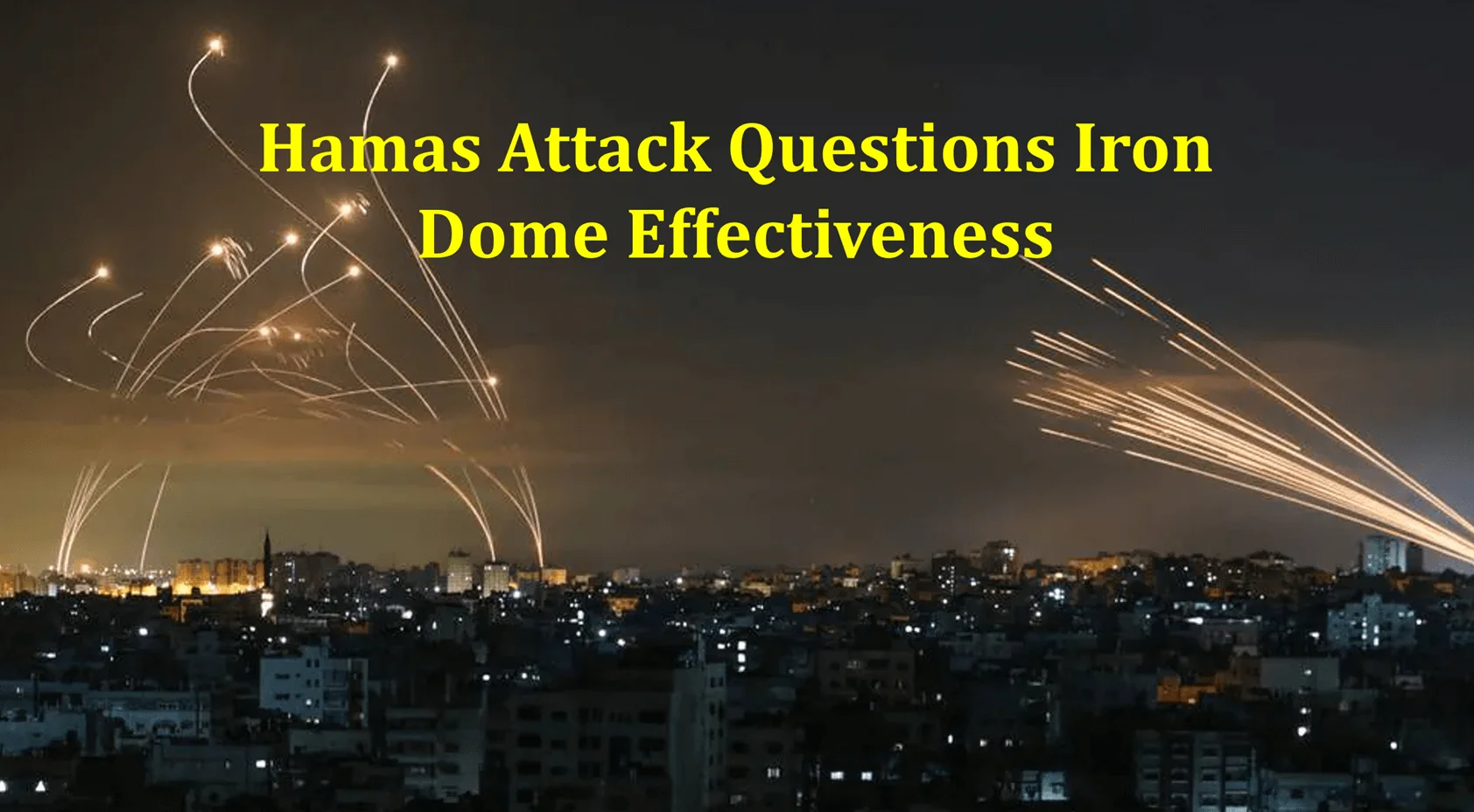
One of the most effective air defense systems in the world is Israel’s Iron Dome. However, the technology recently underwent an unparalleled test due to a surprise Hamas attack by number of rockets. Since coming into action in 2011, it has intercepted thousands of missiles that were aimed for Gaza and southern Lebanon. The Iron Dome has been a symbol of resistance to rocket strikes with a success rate of up to 90%. Did the Iron Dome fail at critical moments? I’ll try to answer this question in this blog post.
The Iron Dome’s Impressive Track Record
The Iron Dome’s success cannot be overstated. It has regularly proved its capacity to intercept incoming projectiles, with a success rate ranging from 85 to 90%. Its efficacy has attracted praise and interest on a global scale during the last 10 years. Countries like the United States and Ukraine have sought to acquire this remarkable technology.
The Surprise Hamas Attack
Hamas, a Palestinian militant organization, launched a shocking attack that tested the Iron Dome’s capabilities to the limit. They claimed to have overpowered the system after firing 5,000 missiles into Israel in only 20 minutes. The Israeli Defense Forces (IDF) did not specify how many of the anticipated 2,200 missiles were actually intercepted.

Hamas Attack: The Human Toll
This Isarel-Palestine conflict escalation and Gaza has serious repercussions. Both troops and civilians were killed, and the gunfights continued all night. The darkened skies were frequently illuminated by relentless rocket streaks. This wave of attacks resulted in one of the deadliest chapters in the longstanding conflict, with over 1,000 people losing their lives.
Iron Dome: Safeguarding Israel’s Skies
The Iron Dome stands as a testament to cutting-edge missile defense technology. Its purpose is to safeguard against a wide spectrum of threats, including rockets, mortars, and drones. Imagine truck-towed units primed to launch radar-guided missiles, engaging and neutralizing their targets mid-flight. The Iron Dome operates by utilizing its own rocket interceptors in tandem with a sophisticated radar system capable of detecting and tracking incoming rockets and missiles.

Strategically stationed across Israel are ten Iron Dome batteries, each offering coverage for city-sized areas and thwarting rockets spanning a range of 4 to 70 kilometers, as verified by the Israel Defense Force (IDF). Astonishingly, every battery can defend an expansive 155 square kilometers, serving as a crucial shield for urban and populated regions. A standard battery consists of three to four launchers, each equipped to hold up to 20 interceptors. However, Mr. Shoebridge stated that, “To give you an idea of coverage that you’d need, if you’re defending against 1,000 incoming missiles, you need at least 1,000 missile interceptors.”
The price of this advanced defense system is substantial. To preserve these valuable interceptors, the radar system rapidly assesses whether a rocket is headed for a populated area; if not, the system refrains from interception, allowing the rocket to harmlessly land. While the Iron Dome undoubtedly plays a pivotal role in Israel’s air defense strategy, it forms just one part of a multi-tiered defense apparatus. Teaming up with the Iron Dome are the David Sling system, known as Magic Wand, responsible for the middle layer of defense, and the Arrow-3, engineered to intercept ballistic missiles beyond Earth’s atmosphere. Together, these systems construct a formidable defense network, reinforcing Israel’s security against an extensive array of aerial threats.
The Iron Dome’s Limitations Exposed
Despite its remarkable success, the Iron Dome is not invincible. It faced a unique and overwhelming challenge during this attack, where some rockets managed to bypass its defenses and strike Israeli territory. While it undoubtedly prevented many casualties, the breach revealed that even the most advanced defense systems have their limits.
Conclusion
Over the years, Israel’s Iron Dome has undeniably established itself as a very successful air defense system. No mechanism, however, is impervious to failure, especially when confronted with an unprecedented volley of missiles, as the latest Hamas attack showed. As conflicts evolve, so too must defense systems. Undoubtedly, the Iron Dome’s performance under extreme pressure raises questions about its adaptability and the need for continuous improvement in the face of evolving threats.
